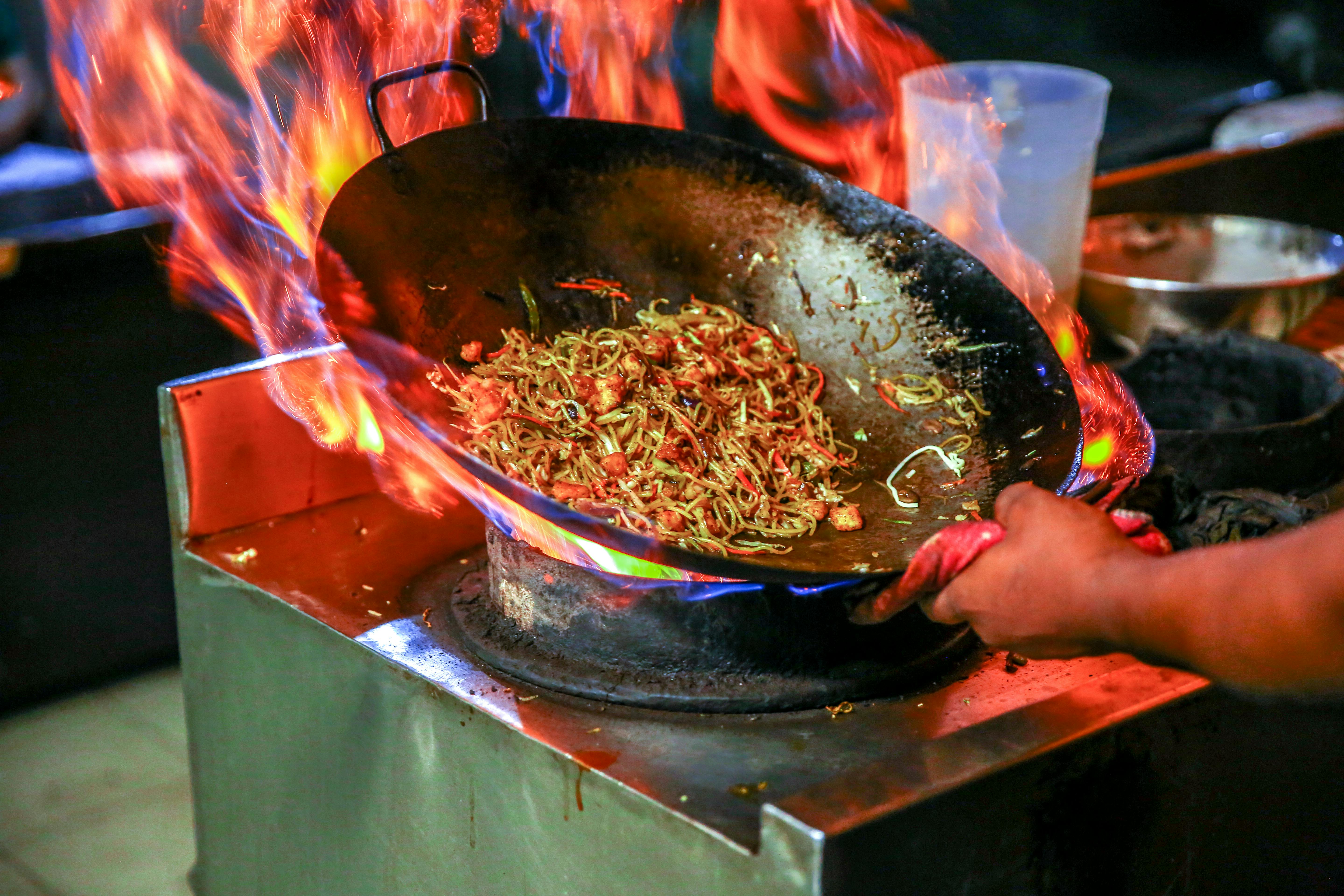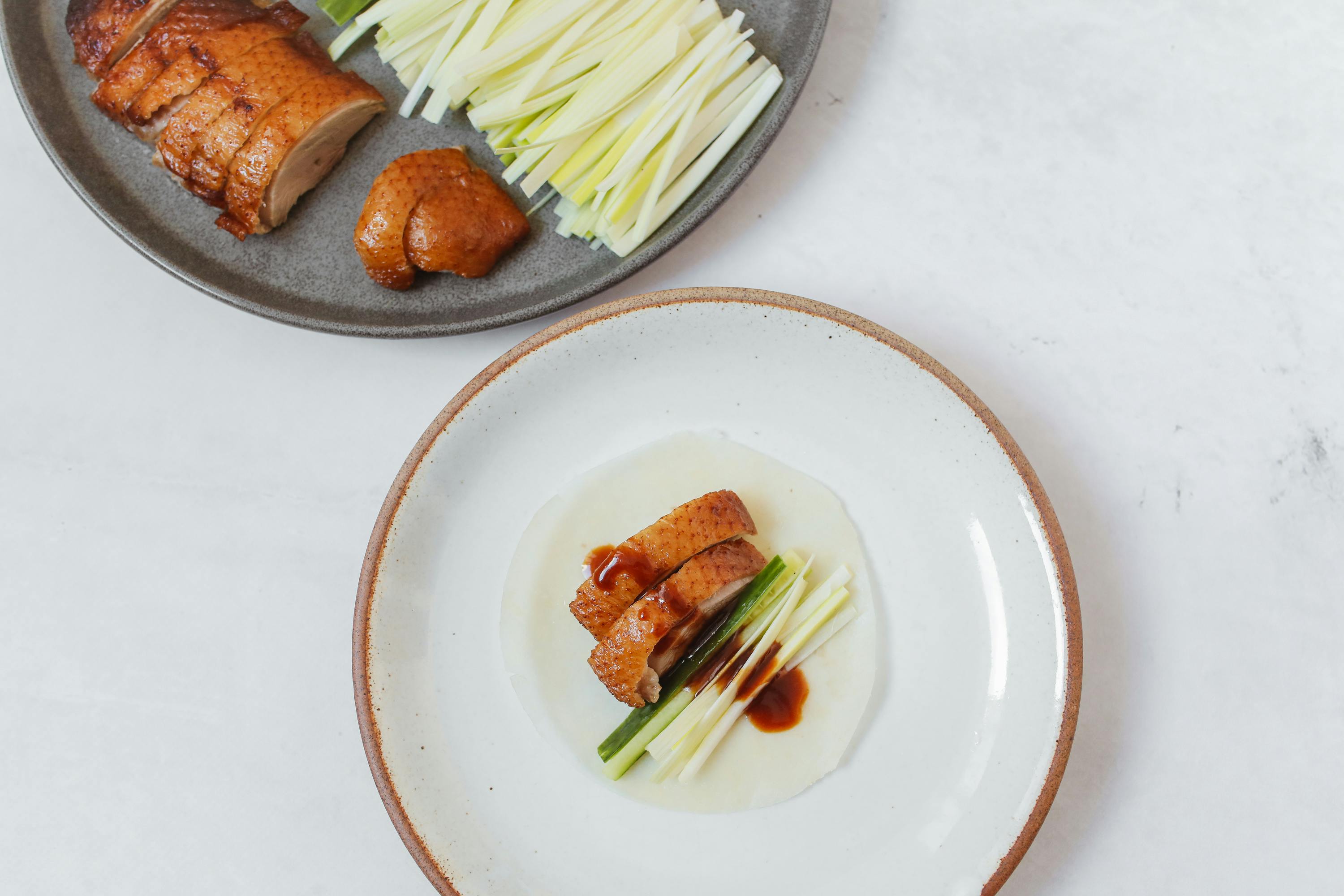Chinese Food Unveiled: Origins, Flavors & Modern Recipes Explained
Let me be upfront: writing about Chinese food is something I approach with a mix of awe and personal nostalgia—plus a healthy amount of humility. Growing up, Chinese takeout boxes were a fixture in my family’s Friday night rituals, but my real education began the first time I tried (and nearly failed at) hand-rolling dumplings in a friend’s Beijing kitchen. It only got more humbling after eating fresh noodles from a Hong Kong street vendor—nothing like the packaged stuff I thought I knew. And as someone who’s spent a good chunk of my professional life researching global cuisine, I have to admit: Chinese food, more than any other, keeps surprising me, challenging both my assumptions and palate. Why? Its sheer scope. There’s everyday comfort food here but also centuries-old traditions, radical flavor combinations, history, innovation, and—above all—a sense of culinary storytelling that’s hard to match.
This guide is designed for anyone who’s ever wondered what makes authentic Chinese food so profound, so comforting, and (sometimes) so misunderstood. We’ll demystify what Chinese cuisine really is, break down its vibrant regional tastes, explore must-try dishes with a mix of personal stories and academic insight, and provide practical recipes and cultural tips—no matter where you’re starting on your food journey. Whether you’re eager to cook at home, plan an insider’s travel itinerary, elevate your understanding, or simply crave new flavors, this is your essential, thoroughly human (sometimes even a bit messy) introduction to Chinese food 1.
What Is “Chinese Food”? The Complex Reality Behind the Label
Let’s address the elephant in the room: When most people say “Chinese food,” do they mean the crispy General Tso’s chicken found on nearly every Western menu, or do they mean the ultra-spicy Sichuan hotpot that leaves your lips tingling? Maybe it’s a memory of homemade jiaozi (dumplings) at Lunar New Year, or a taste of smoky Cantonese char siu. Here’s where I have to clarify—“Chinese food” is not one thing. It’s millions. In fact, what we often get in the West is a highly adapted, hybrid version, filtered through decades of immigration, local tastes, and practical compromises 2.
In my experience, the true beauty of Chinese food lies in these contradictions. Friends from Shanghai serve sweet, delicate bites while those from Hunan swear true food should set your mouth on fire. One chef’s “authentic” is another grandma’s “inauthentic.” That’s what makes exploring Chinese food endlessly rewarding (and sometimes, genuinely perplexing).
Origins & Historical Evolution: Food That Built a Civilization
Now, let’s do a little myth-busting. Chinese culinary history doesn’t start with takeout—it truly begins with archaeological findings as old as 7,000 years: ancient millet noodles in the Yellow River basin, evidence of rice farming in the Yangtze delta, and wild fermentation practices that predate modern beer 3. During my research, I was fascinated to learn that soy sauce dates back nearly two millennia, and tofu has been a vital protein source since at least the Han dynasty. With every dynasty, migration, invasion, and trade route—think Silk Road, Mongol conquests, European colonialism—Chinese food transformed, absorbing global techniques and flavors but always maintaining a core identity centered on ingredient harmony, balance, and communal eating 4.
“Chinese cooking is so broad because it is not shackled by a singular, rigid doctrine; it welcomes innovation but never forgets tradition.”
Honestly, the more I read, the more I realized how little I actually knew at first. Chinese food isn’t just about eating; it’s a living history book, with every dish a chapter worth savoring 5. And yes, I need to revise my earlier point: Sometimes, the oldest flavors really are the most surprising.
China is home to 34 provinces, each with its own distinct culinary profile. The country officially recognizes eight major regional cuisines—but food historians argue there are hundreds of local variations worth exploring!
Regional Varieties: 8 Cuisines, 1 Nation… Or Is It?
I used to think Chinese food could be mapped out like a neat pie chart—maybe Cantonese, Sichuan, a dash of Beijing. Then I spent three weeks zig-zagging across southern China, discovering village-level specialties so hyperlocal they barely make it outside a single valley. Okay, so the “Eight Great Traditions” (Ba Da Cai Xi) are a helpful framework, but trust me, the reality is wilder, richer, and always evolving. Here’s an overview that really only scratches the surface 6:
| Cuisine | Famous Dishes | Flavor Profile | Notable Regions |
|---|---|---|---|
| Cantonese (Yue) | Dim Sum, Roast Duck, Char Siu | Fresh, light, umami, moderate spice | Guangdong, Hong Kong |
| Sichuan (Chuan) | Hotpot, Mapo Tofu, Kung Pao Chicken | Bold, spicy, numbing, complex | Chengdu, Chongqing |
| Shandong (Lu) | Braised Sea Cucumber, Sweet & Sour Carp | Savory, fresh, crisp, delicate | Jinan, Qingdao |
| Jiangsu (Su) | Lion’s Head Meatballs, Steamed Fish | Slightly sweet, mellow, tender | Nanjing, Suzhou |
| Fujian (Min) | Buddha Jumps Over the Wall, Fish Balls | Seafood-rich, umami, sweet-sour | Fuzhou, Xiamen |
| Hunan (Xiang) | Spicy Fish Head, Smoked Pork | Hot, sour, smoky, pungent | Changsha |
| Anhui (Hui) | Stewed Soft Shell Turtle, Bamboo Shoots | Earthy, wild, rustic, umami | Huangshan, Hefei |
| Zhejiang (Zhe) | Dongpo Pork, West Lake Soup | Delicate, mellow, slightly sweet | Hangzhou, Ningbo |
Fascinating, right? What really strikes me is the culinary diversity within a single nation—often surpassing the difference between “American” and “French” food. And that’s before you even consider the spice-laden foodways of Xinjiang or the umami-bombs of Yunnan mushrooms.
Foundational Principles: How Chinese Cuisine Balances Flavor and Meaning
Chinese cooking is governed by ideas of yin and yang—hot/cool, dry/moist, bright/dark. Dishes are composed to maintain internal harmony (a soupy meal balances fried items; spicy offset by cooling greens). Just last month, while talking to Chef Lin in her Chengdu restaurant, she explained: “If a meal isn’t harmonized, you feel it—not just in the mouth, but your whole mood shifts.”
- Freshness: Daily shopping is the norm; seasonal produce is non-negotiable.
- Technique: Stir-frying, steaming, braising, smoking—each requires years to master (as I learned from several charred attempts).
- Presentation: Food should “please the eyes as much as the palate” (my grandmother’s mantra).
- Meaning: Dishes are chosen for symbolic good fortune, health, or social connection, not just taste 7.
It’s not just theory—walk through a local supermarket in Shenzhen or a wet market in Xian, and you’ll see the philosophy in practice: bitter melon next to sweet oranges, fiery chiles balanced with cooling tofu and cucumbers.
Food as Culture: Ritual, Identity, and Everyday Life
“In China, eating is never just about sustenance; it’s a ritual, a celebration, and, sometimes, a code.”
Lunar New Year banquets, Mooncakes at Mid-Autumn, and round family tables filled with lazy Susans—every meal carries a story. Certain foods symbolize prosperity (fish), unity (dumplings), or longevity (noodles)—and eating together is a glue that holds families and communities tight. I’ve personally witnessed this: one quiet dinner with a Guangdong family turned into an epic nine-course feast, each dish arriving with an explanation and a family anecdote. I can’t stress this enough: in China, if you’re at the table, you’re part of the story 8.
Modern Cooking: Secrets of the Chinese Kitchen
Okay, confession: My first attempt at homemade stir-fry came out abysmally soggy. It wasn’t until a veteran chef in Shanghai corrected my technique (“You’re crowding the wok!”) that I finally learned the art of intense, brief heat and constant motion—wok hei, or “breath of the wok.” But the toolkit is vast and surprisingly practical 9:
- Embrace the wok—it’s not just for stir-frying, but for braising, deep-frying, steaming, and even smoking.
- Prep is everything—mise en place is your best friend, since dishes actually cook in seconds.
- Layer flavors—aromatics (ginger, garlic, scallion) form the backbone. Learn to “bloom” these in oil for real depth.
- Master steaming—this is the healthiest, often simplest way to prepare vegetables, fish, and buns.
- Utilize pantry staples—light and dark soy sauce, Shaoxing wine, rice vinegar, sesame oil, and spicy bean paste.
What I love most about Chinese cooking: it’s forgiving. Mess up a sauce? Add a splash of rice vinegar. Overcook the greens? Douse in sesame oil and call it a new dish! These techniques build upon each other, so even beginners can surprise themselves.

Challenges, Myths & Realities: What Most People Get Wrong
Let me step back and be real: There’s a huge gap between “Chinese food” as presented in many Western contexts and the spectrum of what’s actually eaten in China. Pop culture popularized certain myths—MSG is “dangerous,” everything’s fried, or it’s all “mystery meat.” Actually, thinking about it differently, these misunderstandings often arise from history—immigrants adapting dishes for new palates, ingredient constraints, or simple marketing necessity 10.
- MSG is widely used in both East and West, and current science shows it’s safe for most people 11.
- Traditional Chinese diets are actually rich in vegetables, legumes, and light proteins—far more balanced than many fast-food renditions.
- Regional food can be “bland”—think delicate Jiangnan stews—or fiery (Sichuan)—but never one-dimensional.
- Dumplings, noodles, and buns often contain no meat at all. Buddhist cuisine, for example, is a world of flavor in itself 12.
“To understand Chinese food, look beyond the menu clichés. Every dish is a language, every meal an invitation to belonging.”
From my perspective, recognizing these myths isn’t just academic—it helps you appreciate how vibrant and healthy everyday Chinese food really is. Plus, it opens you up to trying those regional gems you’ve probably never seen on a takeout menu.
The Future of Chinese Cuisine: Trends & Globalization
Three years ago, fusion food was everywhere—Bao burgers in London, ma la tacos in Los Angeles—and, honestly, I used to roll my eyes. “Authentic” vs. “fusion” debates got a bit tedious, until I realized: Chinese food has always absorbed foreign influences, tweaked recipes, and evolved.
What excites me now are movements like “New Chinese”—chefs returning to traditional roots but using local, sustainable ingredients, reimagining beloved classics with global twists 13. One of the most fascinating changes? Plant-forward menus, health-conscious recipes, and even vegan interpretations of centuries-old favorites (see Gong Bao Mushrooms).
There’s also renewed pride in regional “home cooking.” Dishes like Yunnan’s Crossing the Bridge Noodles, Hakka Salt Baked Chicken, and Xinjiang Lamb Skewers are popping up around food capitals from Paris to Sydney 14.
Expert Voices & Food Stories: Culinary Wisdom From the Source
“If you really want to learn, cook with a grandmother. Recipes are important, but intuition—how something feels and smells—can’t be written down.”
Just yesterday, a podcast with chef Lucas Sin reminded me how critical oral tradition remains. Recipes are family assets, passed down, revised, and—occasionally—guarded like state secrets. The dynamic is surprisingly democratic: in every household, a debate over “correct” methods rages on. I used to get stressed chasing “perfect” technique; now, I relish the mistakes—burnt dumplings or not, they lead to improvements and new traditions.
- If possible, eat with locals—street vendors, markets, grandmothers, and market cooks are your best guides.
- Learn from mistakes: embrace imperfection as a core ingredient in the learning journey.
- Document your process—photos, tasting notes, even voice memos add to the richness of personal food stories.
Practical Tips: Finding, Cooking, and Eating Chinese Food
- Sourcing Authentic Ingredients: Look for specialty grocery stores with rapid turnover—nothing beats the aroma of freshly ground Sichuan peppercorn (huajiao).
- Starter Recipes: Try scallion pancakes, tomato-egg stir-fry, or mapo tofu before you tackle complex multi-step banquets. (Pro tip: Practice your knife skills. It changes everything.)
- Restaurant Wisdom: Ask for the “secret menu,” or tell the chef you’re eager to try local specialties. (One of my most memorable meals came from a chef “offering what he’d cook for his own children.”)
- Traveling China: Time your visit for local food festivals or night markets—every region will surprise you, especially outside big-city tourist hubs.
What really counts? Curiosity, patience, and a willingness to revise your idea of “the best” with every new taste and encounter.
Technical Note: Schema Markup for Chinese Food Content
For SEOs and web professionals, including Recipe Schema and Article Schema helps ensure search engines accurately capture the depth of your food content. Add Recipe JSON-LD snippets for structured ingredients, nutrition, and cooking steps. Tie blog categories and reviews with Article and Review markup for dynamic search performance 15.
Content Longevity, Updates, and Repurposing
A quick word about future-proofing—one of the things I’ve learned is Chinese food is never static. New fusion recipes, ingredient sourcing practices, and health trends (like plant-based versions of traditional favorites) keep the cuisine relevant. This article is structured for easy updates: you can add new regional spotlights, interview emerging chefs, adapt case studies for newsletters or podcasts, and break tables into infographics for social media. (I can’t tell you how many times recirculating a quote or data set from a food post has led to audience spikes years later!)
- Transform the regional cuisine table into a visual map or carousel for Instagram or Pinterest.
- Pull expert quotes for shareable graphics or LinkedIn food story features.
- Convert “practical tips” into downloadable checklists or mobile-optimized recipe cards.
- Host live workshops or webinars based on technique deep-dives (e.g., hands-on dumpling folding).
Final Takeaways: Chinese Food as Universal Story
Here’s what I’ve ultimately learned, after years of tasting, researching, burning, failing, and—eventually—succeeding in cooking Chinese food: it rewards curiosity, patience, and community. There is no final “best” recipe, only the one being shared right now. Whether you’re a first-time home chef, a traveler, a culinary historian, or simply someone looking to spice up a Tuesday dinner, Chinese food welcomes you as you are—imperfect, evolving, eager to belong.
References



